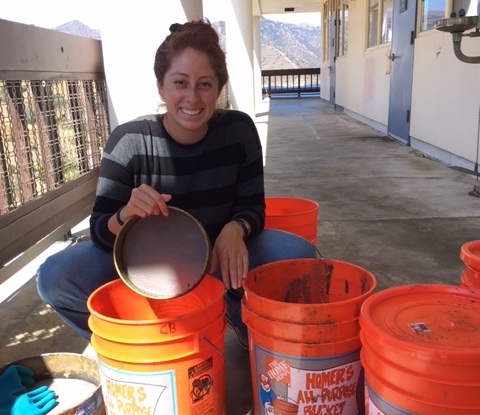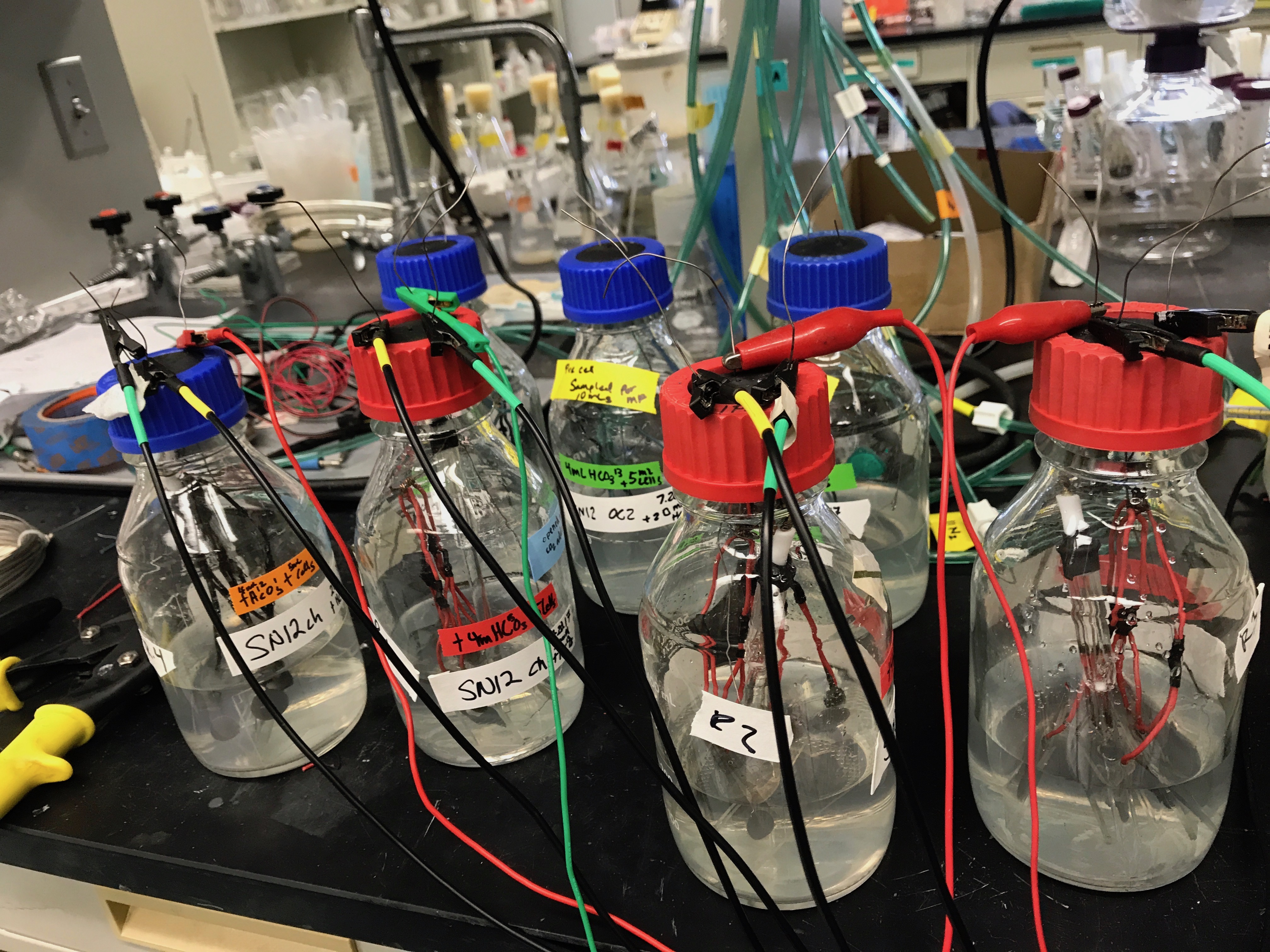By: Casey Barr I am a graduate student in the Department of Earth Sciences at USC, and an environmental microbiologist in the laboratory of Dr. Ken Nealson (who was recently appointed Director of the Wrigley Institute). This summer, my research has focused on the site-specific variability of an electrode cultivation technique pioneered on Catalina through the Wrigley Institute. With this technique, we are able to select for and enrich bacteria capable of extracellular electron transport from marine sediments. The main question I wanted to investigate this summer was: how does our technique work using the sediment of three different sites within one ecosystem? First we had to get our sediment, which is a lot easier said than done. Jasmine (my dive buddy) and I spent 3 days collecting sediment from various areas of the Big Fisherman’s Cove on SCUBA. We dive down on the various study sites armed with 5 gallon buckets, hand trowels and a lift bag. Using 15 gallons of raw sediment from each site, we sieve the samples on shore. Sieving the samples allow us to remove any shells, rocks, or debris that we collected, resulting a silky fine grain sediment, perfect for our electrode technique. Depending on the site, we can end up with between 6-10 gallons of fine grain sediment for every 15 gallons collected.
Once we have our sediment sieved, I bury glass electrodes into the sediment and walk away for a few weeks while the sediments “settle and establish”. In nature, sediments become layered with different types of bacteria living in different sections based on what kind of chemicals they eat and breathe. By allowing our sieved and mixed sediments to settle, we can mimic the natural gradients and layers that exist, creating a microcosm or micro-habitat in a bucket. A few weeks later, I connect the buried electrodes to a potentiostat, which is a machine that allows us to control the potential of the electrode (basically making the electrode a buffet for our EET bacteria!). Currently, I am running two potentials, one of which the bacteria can use as an electron source (similar to eating), and one that allows the bacteria to “breathe” using the electrode as an electron sink. In the past, this method has allowed us to enrich and isolate over 20 novel bacteria strains, making electrode enrichment a great technique in cultivating hard-to-grow bacteria.
In addition to the enrichments, I have also been working with some of the previously isolated bacteria in an attempt to determine if some of our strains are capable of fixing carbon – using CO2 to make biomass, just like plants – while using an electrode as an electron source. These experiments will hopefully prove that some of our strains are actually growing on the electrodes, something that has not been done before. If we can find bacteria that are capable of growing on electrodes, they would be great candidates for applications such as bioremediation (the use of organisms to break down hazardous substances into less toxic forms) and biosynthesis (such as production of electricity and other valuable products).



